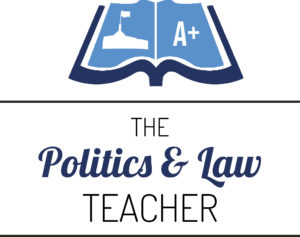Labor and the Greens had competing mandates secured at the May 2022 general election resulting in a negotiated compromise on legislation to implement a strengthened safeguard mechanism. Although political differences remain between Labor and the Greens about climate change action, the legislation satisfies both parties’ aims to reduce CO2 emissions.
Existing Statutes
The Albanese Labor Government and the Australian Greens needed to amend existing climate-related related statutes to implement their election promises on CO2 emissions reduction.
Sixteen years ago and near the end of its term in office, the Howard Government passed the National Greenhouse and Energy Reporting Act 2007. The Act included a “safeguard mechanism” to ensure “that net… emissions of greenhouse gases from… a large facility do not exceed the baseline applicable to the facility” (Power, 2018). It was designed to cap emissions from large industrial emitters if they failed to reduce emissions by other means.
The NGER safeguard mechanism was relatively weak. It only covered emissions from large facilities like power stations and aluminium smelters, which had to keep their direct CO2 emissions within ‘baseline’ levels. Critics argued these baseline levels were too high. As a result, the NGER safeguard mechanism never achieved meaningful reductions in CO2 emissions.
Despite it weaknesses, the NGER safeguard mechanism was the starting point for Labor’s plans for more decisive climate action. The Greens had to follow Labor’s lead because their best way to influence law-making in Parliament is through negotiating amendments to government bills. Several other Acts also required amendment to fully implement the new scheme – see the appendix below.
2022 Election Promises
Before and during the election campaign, Labor promised to reduce CO2 emissions by 43% by 2030 as their interim target for net-zero emissions by 2050. Labor claimed a mandate for the Climate Change Act, passed in 2022 and other legislation to reduce emissions, including strengthening the NGER safeguard mechanism.
The Greens promised to reduce CO2 emissions to achieve net-zero CO2 emissions by 2035. The central plank of their policy was a ban on new coal and gas development and replacing fossil fuels with energy from renewable energy sources. They claimed a mandate too,
Election Result & Mandates
Labor won the election with a primary vote of 32.58% and a two-party preferred (TTP) vote of 52.13%, which delivered Mr Albanese’s party 77 seats and enabled Labor to form a majority government.
Labor’s claim to a will of the majority mandate is supported by its 52.13% TPP vote and its ability to form a majority government in the House of Representatives, where Labor has 51% of the seats in the people’s house. However, its mandate claim is undermined by Labor’s low primary vote of 32.58%, which means less than one-third of electors voted Labor as their first preference – significantly less than a majority.
The Greens’ primary vote was 12.25%. The minor party increased its seats in the House of Representatives from one to four. In the Senate, it gained three seats, taking its tally from 9 to 12. The Greens fell a single seat short of outright control of the balance of power in the upper house. However, they dominate the Senate cross-bench. Independent senator David Pocock was also elected on a climate platform, making him almost sure to vote with the Greens on climate-related bills and motions. Thus, the minor party has virtual control of the balance of power on this matters. The party claims a balance of power mandate based on its strong electoral results in both houses – increasing its representation in the lower house by 400% and in the upper house by 25%. It is a significant component of the cross bench in both houses.
With Labor’s primary vote only 2.67 times greater than the Greens’ vote, the minor party felt justified in claiming authority to exercise power when negotiating with the government party.
Party Negotiations
With competing mandates in play, a compromise was essential.
The numerical strength of majority government meant Labor could readily pass its Safeguard Mechanism (Crediting) Amendment Bill 2022 in the House of Representatives. Its power in the lower house is demonstrated by the fate of six Teal-proposed amendments, which were all defeated – see Legislative Process below. However, the Albanese Government needed the Greens’ support in the upper house or they would not achieve Labor’s mandate.
Meanwhile, the Greens could achieve nothing on their own. Their only chance of influencing law-making in the Parliament is to negotiate government bills with Labor in the Senate. Why? Because the government would vote down Greens’ private member’s bills in the lower house. Convincing Labor to change the Safeguard Mechanism Bill – either in the Senate or before it reached upper house – was the only viable strategy for achieving the Greens’ mandate.
The Greens also carried the burden of responsibility for undermining the Rudd Government’s Carbon Pollution Reduction Scheme (CPRS) in 2009. They voted against the CPRS in the Senate because they believed it was bad policy. In doing so, they torpedoed the best chance for legislating climate action and were blamed by many – including supporters – for the resulting lost decade of emissions reduction. They could not afford to repeat that debacle in 2023.
Thus, it was impossible for either party to achieve their legislative goals on their own. Compromise is the art of the possible – so both parties would have to discuss their differences to reach a solution acceptable to both. It would have to be a piece of legislation both parties could claim as worthy of their mandate.
Compromises
The Labor Party wanted to achieve meaningful CO2 emissions reductions by strengthening the NGER safeguard mechanism. As the government, Labor also had to consider the economic impact of emissions reductions on energy reliability and price. With climate as their primary focus, the Greens wanted to ban coal and gas based on United Nations’ expert advice – which is to phase out coal and gas by 2030 in OECD countries like Australia and replace them with renewable energy.
Labor could not accept the Green’s ban on fossil fuels as they are integral to Australia’s contemporary economy. They are remain critical for reliable energy and export income, despite the rapid growth of cheaper renewable alternatives. Labor may also have resisted the Greens’ fossil fuels ban because the party relies on support from powerful pressure groups representing mining workers – i.e. unions – which it would not wish to alienate. Labor would also have to consider the political cost of battling business and industry pressure groups like the Minerals Council of Australia and the Coal Lobby, which have influenced previous attempts to legislate stronger CO2 emissions reduction.
Nor would Labor agree to a broader application of the safeguard mechanism by including other sectors of the economy in its carbon credit trading scheme. Labor insisted the mechanism will apply only to “covered industries” emitting over 100,000 tonnes of CO2 annually.
Labor’s main concession was to accept the Greens’ demand for a hard cap on total CO2 emissions. The Green’s hard cap means that under no circumstances can covered industries exceed a legislated emissions cap, which can be reduced in future to accelerate reductions up to 2030. It was a significant concession from Labor in return for the Greens walking back their election promise to ban coal and gas. The Greens’ leader, Adam Bandt, claimed the cap would mean that many of the 116 coal and gas projects currently in the development pipeline would be unviable and never go ahead.
The Greens’ also insisted that Labor tighten the carbon offset schemes that allowed emitters to buy carbon credits from “carbon farms” and other carbon abatement businesses to stay under the cap. In the past, offset schemes had proven poorly regulated and unreliable.
Legislative Process
The Safeguard Mechanism (Crediting) Amendment Bill 2022 was introduced into the House of Representatives on 30 November 2022, was read for the first time, and commenced its second reading debate on the same day. Parliament then adjourned for the Christmas break.
The second reading debate continued on 8 and 9 March 2023 before another adjournment. Debate recommenced for two days on 20-21 March.
The bill was debated a final time on 27 March and sent for Consideration-in-Detail on the same day. During the committee stage, six Teal independents unsuccessfully proposed amendments. The bill was read a third time on 27 March, passed the House and was transferred to the Senate.
The Senate dealt with the bill quickly because negotiations between Labor and Greens took place from November 2022, with firm decisions made in March 2023. The first and second reading stages occurred on 28 and 29 March. The bill was referred to the Committee of the Whole on 30 March. On that day, the committee recommended 14 government and two Greens amendments – which were passed by the Senate. Independent senator David Pocock proposed three amendments that were rejected. The bill was read a third time, passed with David Pocock’s support, and referred back to the House on 30 March. The House agreed to the 16 Senate amendments on the same day.
At the time writing the bill was awaiting Royal Assent.
Appendix
Existing statutes requiring amendments to implement the Safeguard Mechanism 2023
- Income Tax Assessment Act 1997 – to ensure safeguard mechanism credit units (SMCs) were taxed correctly.
- Australian National Registry of Emissions Units Act 2011 – to regulate the ownership and trading of SMCs.
- Clean Energy (Consequential Amendments) Act 2011 & Clean Energy Regulator Act 2011 – to protect information held by government agencies
- Carbon Credits (Carbon Farming Initiative) Act 2011 – to delegate legislative power to subordinate authorities to tighten the carbon offset scheme

